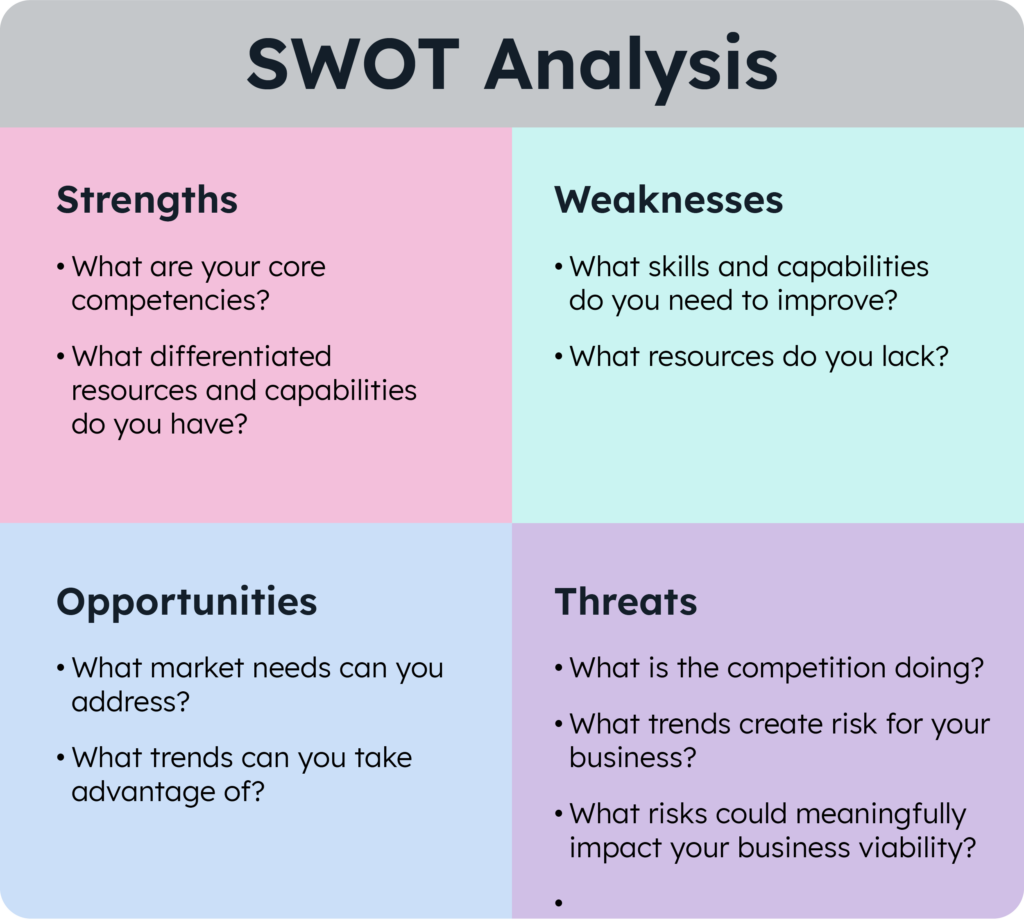If you’re a managed service provider (MSP) seeking to increase profitability, here’s a tip: Create an MSP business plan. Studies show businesses that create a plan grow 30% faster than those that don’t — and 71% of the fastest-growing companies have a business plan.
An MSP business plan defines your strategy and demonstrates your legitimacy as a managed service provider, which can help you bring on investors and new business.
If you’re unfamiliar with how to create an MSP business plan, the following guidance will help you understand what business plans are, what to include, and key considerations for MSPs throughout the process.
The importance of business plans for MSPs
A detailed business plan is a foundational element for establishing a successful MSP business. If you’re not strategic about how your MSP business model will work, it’s harder to stay focused on what really matters.
A common pitfall for MSP business owners is focusing too heavily on their technical capabilities and offerings. Your profitability isn’t solely determined by how technically capable you are; that’s just one part of the equation. An MSP business plan helps you strategically structure your business, target customers, set prices, and drive profits.
Essential components of an MSP business plan
The essential components of an MSP business plan include an executive summary, a description of your business, an analysis of the competition, details on how you will execute your plan, as well as details of your financial and marketing strategies.
While these are the common components of an MSP business plan, yours should be customized to your business and your needs. Resources like the Small Business Association’s templates can also provide a solid foundation on which to build your MSP business plan.
Executive summary
The executive summary is a brief statement about what your business does and how it will make money. Think of it as your elevator pitch to a business executive or the first two minutes of a Shark Tank pitch.
Key points to include in an executive summary are:
- Mission statement
- Primary business goals
- Services offered
- Company size
- Target market
If you are seeking funding, your executive summary should also include financial information and plans for growth.
Business description
This section of an MSP business plan details your strategic goals and value proposition. In the business description section, explain your competitive advantages and detail how you will solve problems for your target market. Clearly defining your core business objectives, including your mission statement, vision, and strategic goals, is crucial.
The business description is also where you’ll explain the structure of your business and team composition. For example, will you be a sole proprietorship, limited liability company (LLC), S-Corp, or some other business type? Are you a one-person team or will multiple departments and contractors be involved? Answering these questions helps clients, business partners, and understand your approach to business planning.
Competitive analysis
The competitive analysis section of a business plan describes the size of your target market, who your customers and competitors are, and how your business will differentiate itself in the marketplace. Answering the following questions can help others understand the viability of your business model.
- What is your total addressable market (TAM)?
- Who are your target customers?
- What other businesses are competing for those customers?
- Why would those customers choose you over alternatives?
- How do your pricing strategies compare with competitor pricing?
Operational plan
An operational plan details the day-to-day activities that will enable you to execute your business plan. This is the part of your MSP business plan where you will answer tactical questions about your business, including staffing, infrastructure, location, and processes.
Think about your strategic goals as you build this section, and focus on answering questions like:
- What processes will you put in place?
- Who will execute the processes?
- What software and hardware will you use?
- Where will you operate?
- How will you measure quality and effectiveness?
As you create your operational plan, try not to get lost in the details. Although this section is about day-to-day operations and tactics, it should still clearly align with your strategic goals.
Financial plan
This is the section of your business plan where you detail key MSP KPIs (key performance indicators) to compute your projected expenses, revenue, and profits. MSP KPIs that are likely to be relevant include:
- Monthly recurring revenue (MRR)
- Cost of goods sold (COGS)
- Average deal size
- Customer acquisition cost (CAC)
- Client lifetime value (CLV)
You should also include details on managing expenses, assets and liabilities, and payroll. Accounting deliverables like cash flow projections and balance sheets will help support your financial business planning; consider including them as part of the financial plan or referencing them in the appendix.
Marketing plan
MSP marketing is a big driver of overall MSP success. This section of an MSP business plan explains how you will market your business and includes a description of your ideal customer. You can also define the scope of your efforts, such as focusing on the local MSP market or promoting your services more broadly.
Your marketing plan section should describe whether your business’ marketing strategy focuses on SEO (search engine optimization), digital advertising, physical advertising, or some other mix of marketing channels. It should also include the KPIs you’ll use to measure success, like CAC, CLV, cost per lead, and total cost of sales and marketing.
Appendix
The appendix is where you can cite the sources and calculations that support the rest of your plan.
This section is a good place to include:
- Financial reports
- Projections
- Licenses
- Legal documents
- Resumes or backgrounds for leadership team members
- Contracts
Five considerations for your MSP business plan
As you build your MSP business plan, you’ll invariably encounter interesting questions and challenges. The following tips can help you address them, create an optimized plan for your situation, and avoid common pitfalls.
1. Conduct a SWOT analysis
A SWOT (strengths, weaknesses, opportunities, and threats) analysis is an exercise that can help you think deeply about your MSP business model. It can also help you validate or reject your assumptions about your business and strengthen your overall plan. This process should help you identify competitive advantages to lean into, as well as risks.
You can perform a SWOT analysis by filling out a straightforward 2×2 grid that groups your strengths, weaknesses, opportunities, and threats. Here are the questions to answer for each quadrant:

2. Create a marketing funnel
A marketing funnel includes essential steps for finding and engaging with your ideal customers. A basic funnel should define:
- How you’ll connect with top-of-funnel (TOFU) searchers: In the TOFU stage of the customer journey, people have identified a pain point, but not a solution. How will you use SEO or other strategies to help people find you?
- How you’ll connect with people searching for MSPs: TOFU searchers typically move onward to the middle of the funnel (MOFU), meaning they’ve identified what they need (MSP services) but haven’t found a solution.
- How you’ll differentiate your services from your competitors’ services: Searchers who reach the bottom of the funnel (BOFU) are evaluating specific service providers. They may be reviewing pricing strategies, looking at who charges a fixed fee vs. variable fees, and who offers the best technical support. Most importantly, they want evidence of high-quality services, so they’ll probably be looking for reviews on sites like G2 and Capterra.
3. Incorporate a security strategy
Cybersecurity is essential to just about every business today. As an MSP who is a trusted advisor to your clients, you should consider how security plays into your business model. For example:
- Will you market yourself as an MSSP with a security focus?
- Will you offer specific security services?
- Will you partner with a specific cybersecurity vendor?
The answers to these questions will directly impact your business model, marketing strategy, and business plan.
4. Focus on customer service
You can’t run a profitable business if you have a high churn rate. If you can delight and retain your customers, you can increase CLV and profitability. Furthermore, an MSP with a reputation for excellent customer service can differentiate itself in the marketplace and generate word-of-mouth referrals that fuel growth.
When your business prioritizes customer service, you reduce your churn risk. Even so, some customers will churn — but when they do, ask for feedback. Any insights they share might help you improve your business plan.
5. Be open to new opportunities
An MSP business plan is an excellent strategic tool that can set you up for long-term success. However, you shouldn’t let your plans today prevent you from being nimble and open to new opportunities as they arise.
As an MSP business leader, you must strike a balance between staying the course and adapting when necessary. Treat your strategic plans as living documents and be willing to explore new opportunities as they arise.
Empower your MSP business with Syncro
Syncro is a fully integrated PSA, RMM, and remote access platform purpose-built to help MSPs run more profitable businesses.
If you’d like to see what Syncro can do for your business, sign up for a free trial today!
Share














